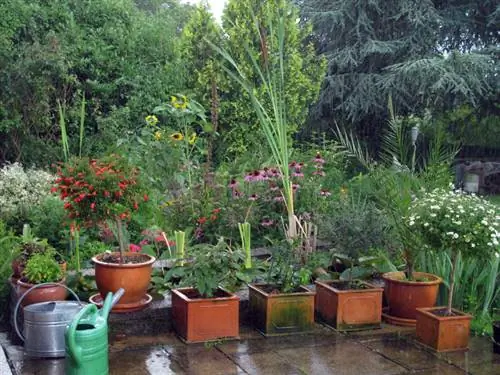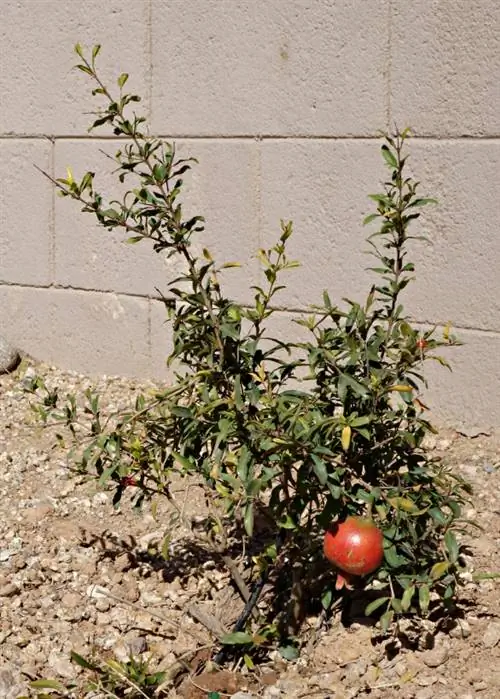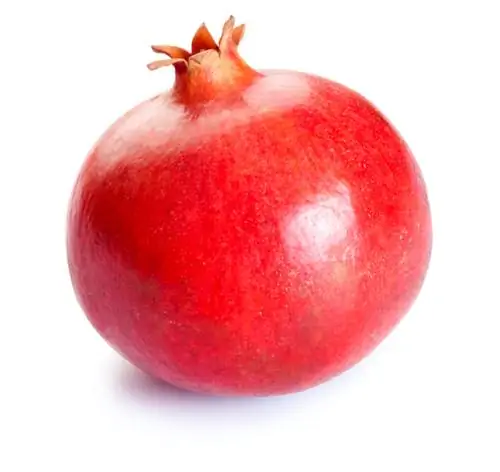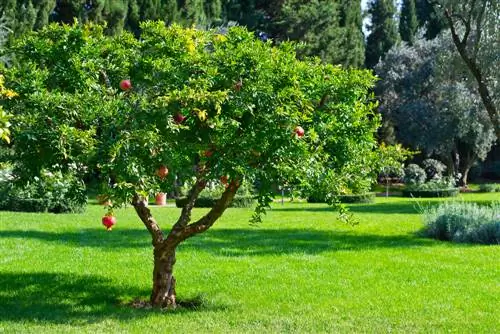- Author admin [email protected].
- Public 2023-12-16 16:46.
- Last modified 2025-01-23 11:20.
The pomegranate tree (lat. Punica granatum) is an ornamental and useful plant that is widespread from southeastern Europe to the Himalayas. The pomegranate is now also very popular in Central Europe. It is robust and requires little care.
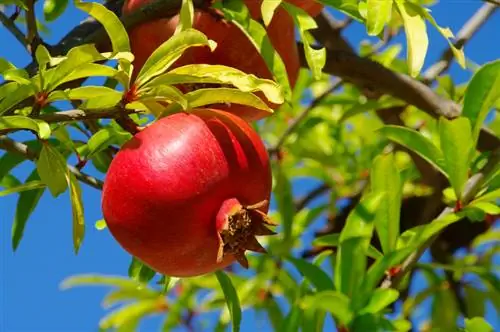
Why is the pomegranate tree considered an easy-care exotic plant?
The pomegranate tree is easy to care for as it requires little water, fertilization and pruning. It prefers sunny, warm locations and tolerates drought. It is important to keep it frost-free and cool in winter to prevent pest infestation.
Punica granatum is a small, deciduous tree or shrub native to subtropics. It loves it sunny, warm and dry, but is otherwise rather frugal in terms of location and care. Since the tree is not hardy, you keep it as a potted plant in the garden or on the terrace in summer and bring it into the house in winter.
How often is pomegranate watered?
Watering regularly in summer, but only when the top layer of soil has completely dried out. The pomegranate tree does not tolerate waterlogging. Short-term water shortages are easily overcome.
When and how is fertilization done?
From spring to late summer, commercially available complete fertilizer (€9.00 on Amazon) should be given for good growth. Fertilization is carried out every two to four weeks; over-fertilization may impair flower formation.
When does repotting make sense?
The best time for repotting is in the spring before new growth. Repotting is carried out as needed, e.g. B. if
- the strongly grown shrub threatens to tip over in a pot that is too small,
- the roots no longer have room in the pot,
- the flowering is fading.
Is cutting necessary?
For a pomegranate tree or bush, as for most fruit-bearing trees, regular pruning promotes flower and fruit formation, which only occurs on the new shoots. Pruning takes place in the fall after the harvest or in the spring before new growth. The young shoots are cut back by about a third, while the damaged, weak or mutually disturbing branches are removed.
What should you consider when wintering?
The pomegranate tree is not hardy and must be overwintered in a cool, frost-free place. As soon as the temperatures drop, it sheds its leaves and can move to its winter quarters. The tree should be left there in the dark at temperatures of around 5 °C until February. During this time, you should only water very sparingly so that the plant does not dry out completely. From February the tree can move to a warmer and brighter place, from where the pot can go outdoors again in May.
What pests and diseases are threatening?
The pomegranate tree is not susceptible to disease. Only care errors can cause the plant to become sick or infested with pests. If the wintering location is too warm, the tree can be infested with lice or mites. If too little water is given during the growth phase, the tree loses its leaves. Too much fertilizer affects flower formation.
Tips & Tricks
In most regions of Germany, summer is too short and too cold so that the fruits do not manage to ripen. The coral-red flowers decorate the pomegranate bush all summer long.


